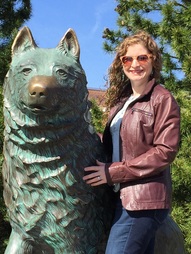One option I provide is a creative project, “something, based on past research, which you will disseminate on the internet. This project should include a similar number of references as a literature review, but will be summarized for laypeople, not academics. You should also include a short (2 pages?) paper with a reference list that describes how the literature informed your project. There are a number of different possibilities, such as a Wikipedia entry, an on-line quiz, a website that provides advice to a particular population, or a video on YouTube.”
Students do not frequently choose this option, but when they do, I always find the outcomes interesting. This year, a doctoral student in education, who has worked in the school system with students with autism, created a website that provides resources for children with autism. I encourage you to check it out, both as an example of a creative project, and in case you know anyone who might need such resources.
A previous year, a student wrote a website to provide resources to immigrant parents. And once, a student, who was trying to get a job as an academic adviser, wrote a website that targeted at first year college students.
I think it’s great when students are able to use class assignments to push out a manuscript, and I encourage it. But sometimes students want a break from standard academic writing and I enjoy giving them an outlet for this very different type of writing as well.
“The post Last week in Adolescent Development: Creative project examples first appeared on Eva Lefkowitz’s blog on June 15, 2016.”


 RSS Feed
RSS Feed
